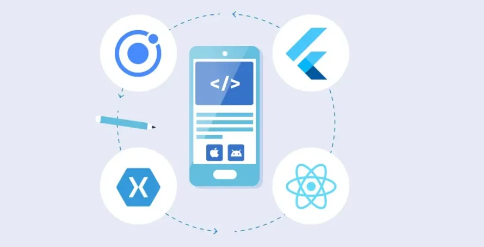Future Trends in Cross-Platform Application Development for 2024 and Beyond

As mobile app usage continues to rise exponentially, developers and businesses are focusing on ways to reach the widest possible audience with the most efficient use of resources. Cross-platform application development has emerged as a crucial strategy in this context. By enabling the development of applications that work across multiple operating systems from a single codebase, cross-platform development significantly reduces time, cost, and effort. This guide explores the future trends shaping cross-platform application development, highlighting the technological advancements and priorities that will define the industry in 2024 and beyond.
Technological Advancements Shaping the Future
5G Integration
The rollout of 5G technology is set to revolutionize mobile connectivity, offering data speeds up to 100 times faster than 4G. This advancement will have profound implications for cross-platform development.
Faster Data Speeds Enabling More Immersive App Experiences
5G will enable developers to create richer, more immersive app experiences. For instance, high-definition video streaming, augmented reality (AR), and virtual reality (VR) applications will benefit from the increased bandwidth and reduced latency. Real-time features, such as live gaming, video conferencing, and IoT applications, will become more reliable and responsive, enhancing user engagement and satisfaction.
Real-Time Features, High-Quality Video Streaming, Low-Latency Interactions
Applications that rely on real-time data transmission, such as financial trading apps, telemedicine, and interactive education platforms, will see significant performance improvements. The lower latency of 5G will ensure smoother interactions, making these applications more practical and efficient. Additionally, the advancements in 5G technology will enhance the performance of video editing tools, allowing for real-time editing and faster processing speeds.
Expanding Role of AI and Machine Learning
Artificial Intelligence (AI) and Machine Learning (ML) are transforming the way applications operate, making them smarter and more intuitive.
Smarter and More Intuitive Applications
AI and ML will continue to enhance the functionality of cross-platform apps. These technologies can be used to develop applications that learn from user interactions, providing personalized experiences and predictive insights. For example, AI-powered chatbots can handle customer queries more efficiently, while ML algorithms can predict user behavior to offer tailored content and recommendations.
Personalization, AI-powered chatbots, Voice Assistants
Personalization will become a key focus, with AI-driven applications offering bespoke experiences based on individual user preferences and behaviors. AI-powered chatbots and voice assistants will become more sophisticated, providing seamless and natural interactions. These tools will not only improve customer service but also gather valuable data to further refine the user experience.
Augmented Reality (AR) and Virtual Reality (VR)
AR and VR are no longer confined to the gaming industry. These technologies are making inroads into various sectors, including eCommerce, education, healthcare, and real estate.
Moving Beyond Gaming into Various Industries (eCommerce, Education)
In eCommerce, AR can enhance the shopping experience by allowing customers to visualize products in their real environment before making a purchase. Educational institutions can leverage VR to create immersive learning experiences, making complex subjects more accessible and engaging.
Integration with Edge Computing for Faster Processing
To overcome the latency issues associated with AR and VR, these technologies will increasingly integrate with edge computing. By processing data closer to the source, edge computing reduces latency and improves the performance of AR/VR applications. This integration will enable real-time interactions, which are crucial for applications like remote surgery, virtual training, and interactive simulations.
The Rise of Progressive Web Apps (PWAs)
Progressive Web Apps (PWAs) combine the best of web and mobile applications, offering a seamless user experience across devices.
Seamless User Experience Across Devices
PWAs are designed to work on any platform that uses a standard-compliant browser, ensuring a consistent experience whether accessed on a desktop, tablet, or smartphone. They load quickly, even on slow networks, and provide offline capabilities, making them highly reliable.
Improved Performance and Offline Capabilities
One of the significant advantages of PWAs is their ability to work offline or on low-quality networks. This is achieved through service workers, which cache the app’s assets and data. This capability ensures that users have access to the application anytime, enhancing the overall user experience.
Reduced Dependence on App Stores
PWAs can be installed directly from the web, bypassing app stores. This not only simplifies the installation process for users but also reduces the dependence on app store policies and approval processes. For developers, this means faster deployment and fewer barriers to reaching their audience.
Cross-Platform Frameworks: The Evolving Landscape
Continued Popularity of Established Frameworks
React Native, Flutter – Dominance and Feature Maturity
React Native and Flutter have emerged as the leading cross-platform frameworks due to their robust performance and extensive community support.
React Native:
Developed by Facebook, React Native allows developers to build mobile apps using JavaScript and React. Its ability to render native components ensures high performance and a native-like user experience. With a mature ecosystem and extensive library support, React Native is a preferred choice for many developers.
Flutter:
Developed by Google, Flutter uses the Dart programming language and provides a rich set of pre-designed widgets. Its hot-reload feature allows developers to see changes in real time, speeding up the development process. Flutter’s ability to deliver high-performance applications with a single codebase has made it a strong contender in the cross-platform space.
Both frameworks are continuously evolving, with frequent updates and new features that improve performance, enhance native integration, and expand capabilities.
Emerging Frameworks and Tools
Exploration of New Options for Specific Needs (e.g., Web Assembly)
While established frameworks dominate the landscape, new tools and frameworks are emerging to address specific needs.
Web Assembly (Wasm):
Web Assembly allows code written in various languages to run on the web at near-native speed. This opens up new possibilities for cross-platform development, particularly for performance-intensive applications. Developers can leverage existing codebases in languages like C++ and Rust to build web applications with enhanced performance.
Low-Code/No-Code Platforms for Citizen Developers
The rise of low-code and no-code platforms is democratizing app development, enabling non-technical users to build applications without writing extensive code.
Low-Code Platforms:
These platforms provide a visual development environment with drag-and-drop components and pre-built templates. They enable rapid application development and are ideal for building internal business applications and prototypes.
No-Code Platforms:
No-code platforms go a step further, allowing users to build fully functional applications through a visual interface. These platforms are empowering “citizen developers” to create solutions tailored to their specific needs, fostering innovation and reducing the burden on IT departments.
Priorities for the Future of Cross-Platform Development
Enhanced User Experience (UX)
Focus on Delivering Exceptional UX Across All Platforms
As competition in the app market intensifies, delivering an exceptional user experience is paramount. Cross-platform developers must prioritize UX design to ensure a consistent and engaging experience across all devices.
Importance of UX/UI Design in Development Process
Investing in UX/UI design during the development process is crucial. This involves understanding user needs, conducting usability testing, and iterating on design based on feedback. By focusing on UX/UI, developers can create intuitive and aesthetically pleasing applications that retain users and drive engagement.
Security and Privacy
Growing Concerns in a Mobile-First World
With the increasing reliance on mobile applications, security and privacy concerns have come to the forefront. Developers must implement robust security measures to protect user data and build trust.
Building Trust with Robust Security Measures
Implementing security best practices, such as data encryption, secure authentication, and regular security audits, is essential. Additionally, adhering to privacy regulations and ensuring transparent data practices will help build user trust and comply with legal requirements.
Continuous Learning and Adaptation
Keeping Pace with Rapid Technological Advancements
The tech landscape is evolving rapidly, and developers must stay abreast of new trends and technologies. Continuous learning and adaptation are critical to maintaining a competitive edge in cross-platform development.
Upskilling Developers and Embracing New Trends
Investing in upskilling developers through training programs and certifications will ensure they are equipped to leverage the latest tools and technologies. Embracing new trends, such as AI, ML, and edge computing, will enable developers to create innovative and impactful applications.
Conclusion
The landscape of cross-platform development is ever-evolving, driven by technological advancements and changing user expectations. At Hashlogics, we are at the forefront of these exciting developments, committed to creating innovative, efficient, and impactful applications.
By embracing 5G, AI, AR/VR, PWAs, and emerging frameworks, Hashlogics empowers developers to deliver superior user experiences and reach wider audiences. Prioritizing UX, security, and continuous learning ensures that our team stays competitive and responsive to market demands.
As we look to 2024 and beyond, the convergence of these trends will democratize app development, fostering innovation and making advanced technologies accessible to a broader audience. The future of mobile app development at Hashlogics is bright, promising a more connected, efficient, and intelligent digital landscape.




